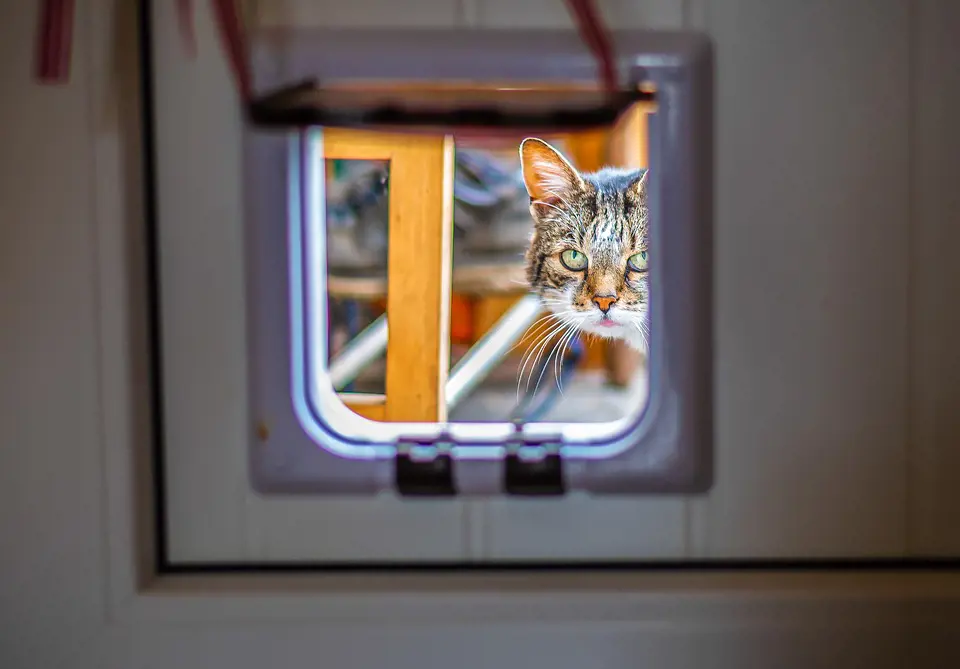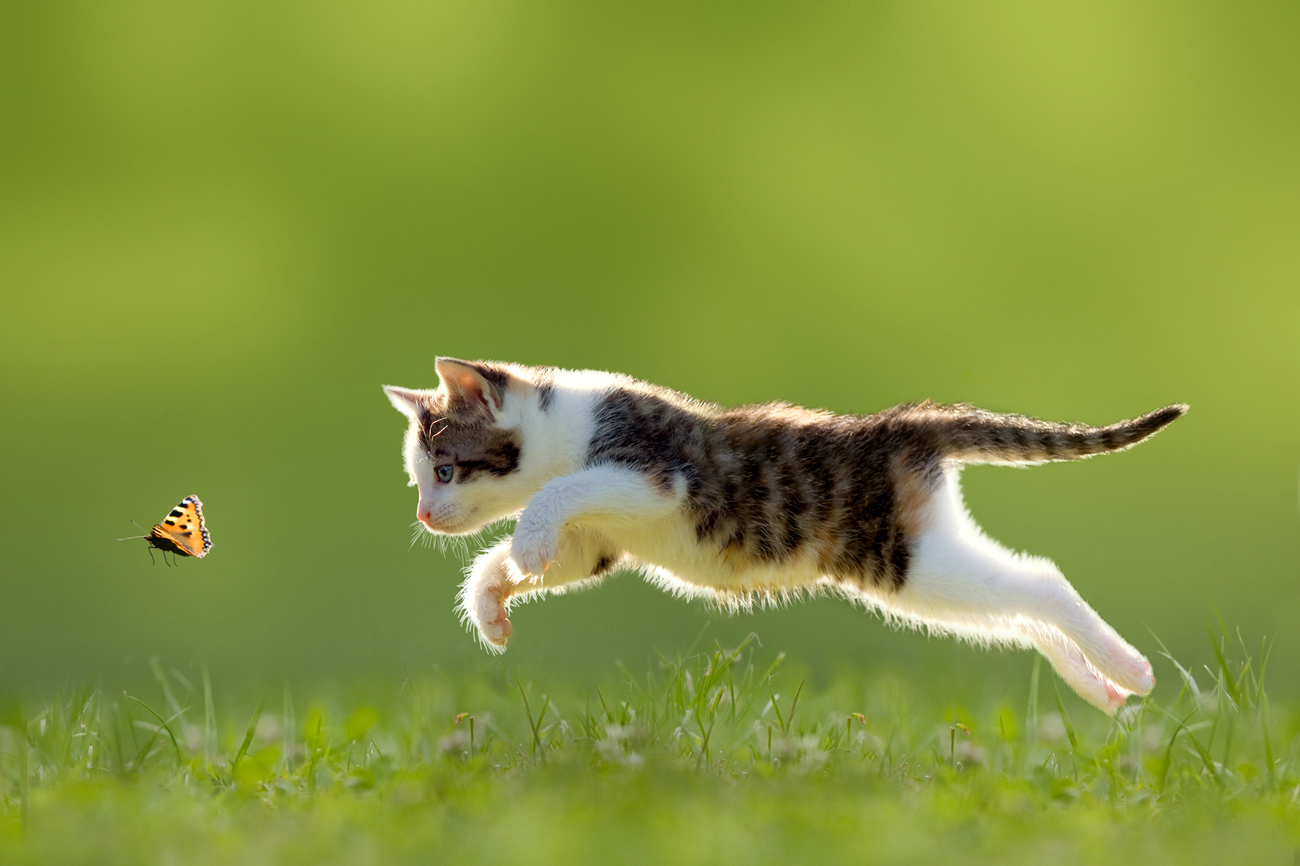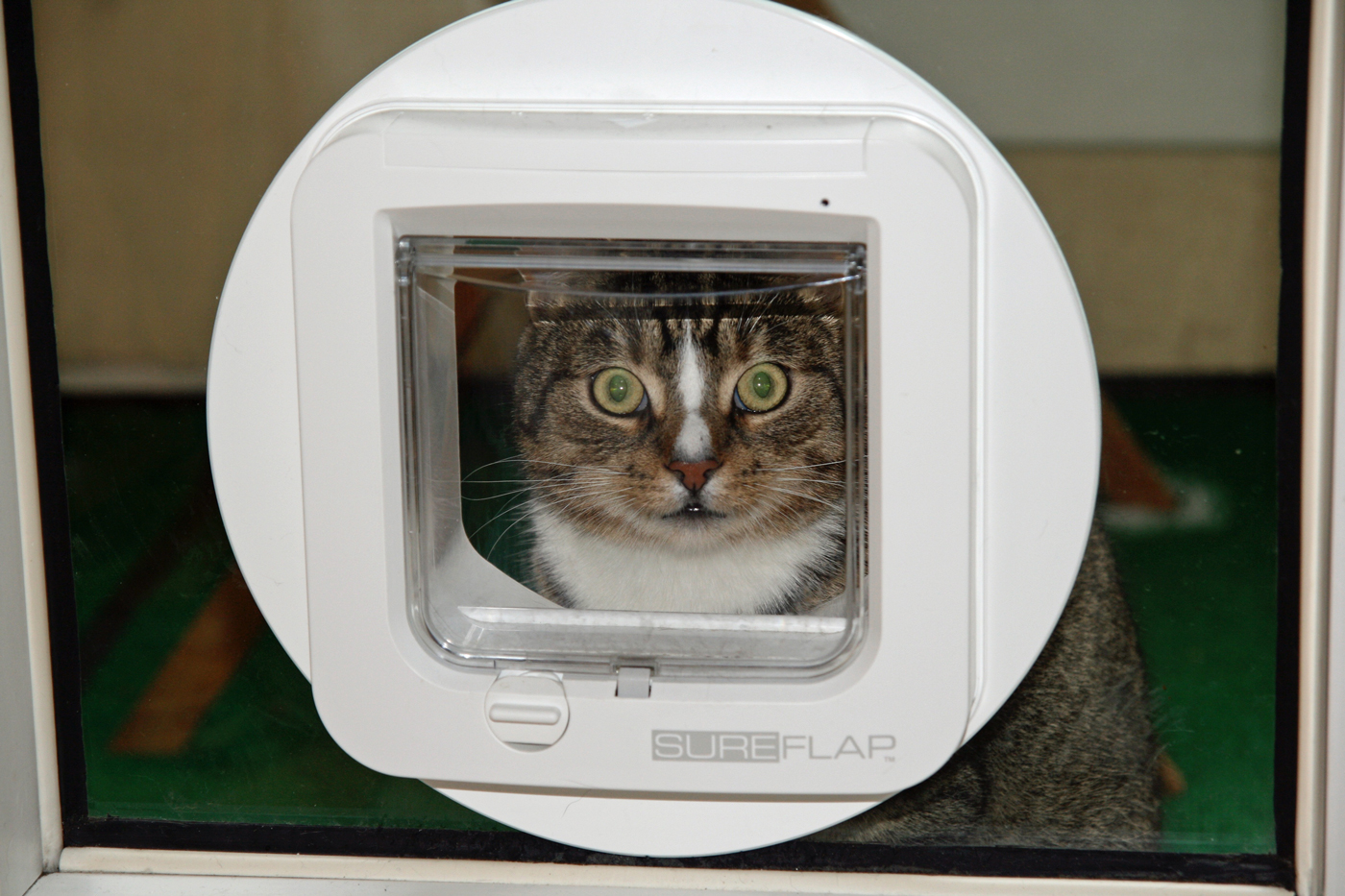How to train your cat to use a cat flap
12th May, 2020

If it’s time to let your precious new kitten outside, you may want to install a cat flap to make it easier for them to come and go as they please.
Before your cat is allowed to venture out into the big, wide world, make sure they have had all their vaccinations and that you have them microchipped (and in your home are covered by reliable pet insurance).
That way, you’ll be able to locate them much more easily and make sure they’re protected from any diseases they may pick up while they’re roaming around. You may wish to neuter your cat, too, to avoid any unwanted pregnancies.
Kittens shouldn’t be allowed out until they’re six months old and older cats should be allowed to get used to their indoors environment before being left to roam free.
While microchipping is a legal requirement for dog owners, cats only have to be microchipped if you plan on taking them abroad.
The benefits of roaming outside
If you’re a new cat parent, it might seem scary to let your cat wander out on its own away from the safety of your home. But there are many benefits to letting your cat explore outdoors.
As Cats.org.uk explains, roaming outside allows your cat to establish a larger territory and display natural behaviour like scratching, sniffing and spraying (not really something that you want them doing in the house).
Being outside allows them to practise their natural hunting and stalking instincts, too, which may also result in fewer unwanted rodents near your property.
Both dogs and cats need a good amount of exercise to keep them fit and healthy. Roaming around outside lets cats build muscle and keep their bodies agile, jumping over fences, climbing trees and so on.
Obese cats can develop various health problems which could see you claiming on your pet insurance somewhere down the line.

Do I need a cat flap?
Before you cut a hole in that lovely back door, you might ask yourself if you really need a cat flap. Can’t you just open the door or window and let your kitty go in and out that way? If you sit at home all day, the answer might be yes.
But if you have a busy lifestyle or work during the day, you probably won’t be available to let your feline in and out whenever they feel like it. If that’s the case, a cat flap is advised so your cat doesn’t feel trapped at home all day.
Let’s take a look at the different types of cat flap on offer:
Standard cat flap
Standard cat flaps are the cheapest option but it does mean that any cat in the neighbourhood can use them (and they might leave you little ‘presents’ like birds, mice or poop just to say they’ve paid you a visit).
Intruding cats can also become very stressful for your own feline and make them feel anxious which may affect their behaviour. with Purely Pets gives you access to a 24-Hour Vet Helpline so give them a call if you think your cat might be affected by this.
Microchip-activated cat flap
If you’re concerned that a cat flap might mean you get unwanted feline visitors invading your cat’s space, you can buy ones that are only activated by your cat’s own microchip, meaning intruders are kept at bay.
Magnet cat flaps
Magnet cat flaps will only allow those cats to enter who have a magnet in their collar. While this helps to stop every Tom roaming into your kitchen, this does mean any cat with a magnet in their collar can come in.

Infra-red cat flaps
These cat flaps can be programmed to pick up the infra-red tag on your cat’s collar, but again, if another cat has a similar device in their collar, they’ll be able to access the flap.
Overall microchip-activated cat flaps are the best bet for keeping your kitty in and other cats out!
Cat flap training tips
Some cats take to using a cat flap like a duck to water. But some can be scared and timid and so need a little more encouragement.
As with all animal training, patience is key. Here are some top tips to help your cat flap training go smoothly:
- Entice your cat up to the cat flap with treats and hold it open so they can see it’s a way in and out.
- Go outside and hold the treat the other side of the cat flap and call their name like you would at feeding time.
- When they do go through, give them a treat and lots of praise. Repeat the process until they’re happy to come in and out on their own.
- If they’re having problems opening the flap themselves, prop it open for the first few times so they can see through to the other side. This will encourage them to push it on their own and eventually they’ll be flying through!
Remember, never force a cat through a cat flap. Not only could you end up injuring the animal, you could end up getting bitten or scratched yourself.
Be patient, give the cat lots of praise and they’ll be using the cat flap properly in no time.
Pet insurance with Purely Pets
The outside world holds many potential dangers for our cats. They could pick up fleas and ticks, get into fights with other cats, get lost or worse. That’s why it pays to protect yourself from vets’ bills with
Purely Pets can offer cover for in your household. Plus, you’ll be able to manage your documents online at a time that suits you and call our free 24-Hour Vet Helpline if you have any concerns about your pet.
With excess starting from just £60, and a range of lifetime covers to choose from, you can be sure you’ll find the right protection for you and your kitty.
Get a quote today and see how much you could save.
Helpful Pages
Recent Posts
Pet Insurance Quote
- 98% claims paid *
- Claims paid directly to vets
- 24/7 vet video consultations
- Interest free monthly payments




